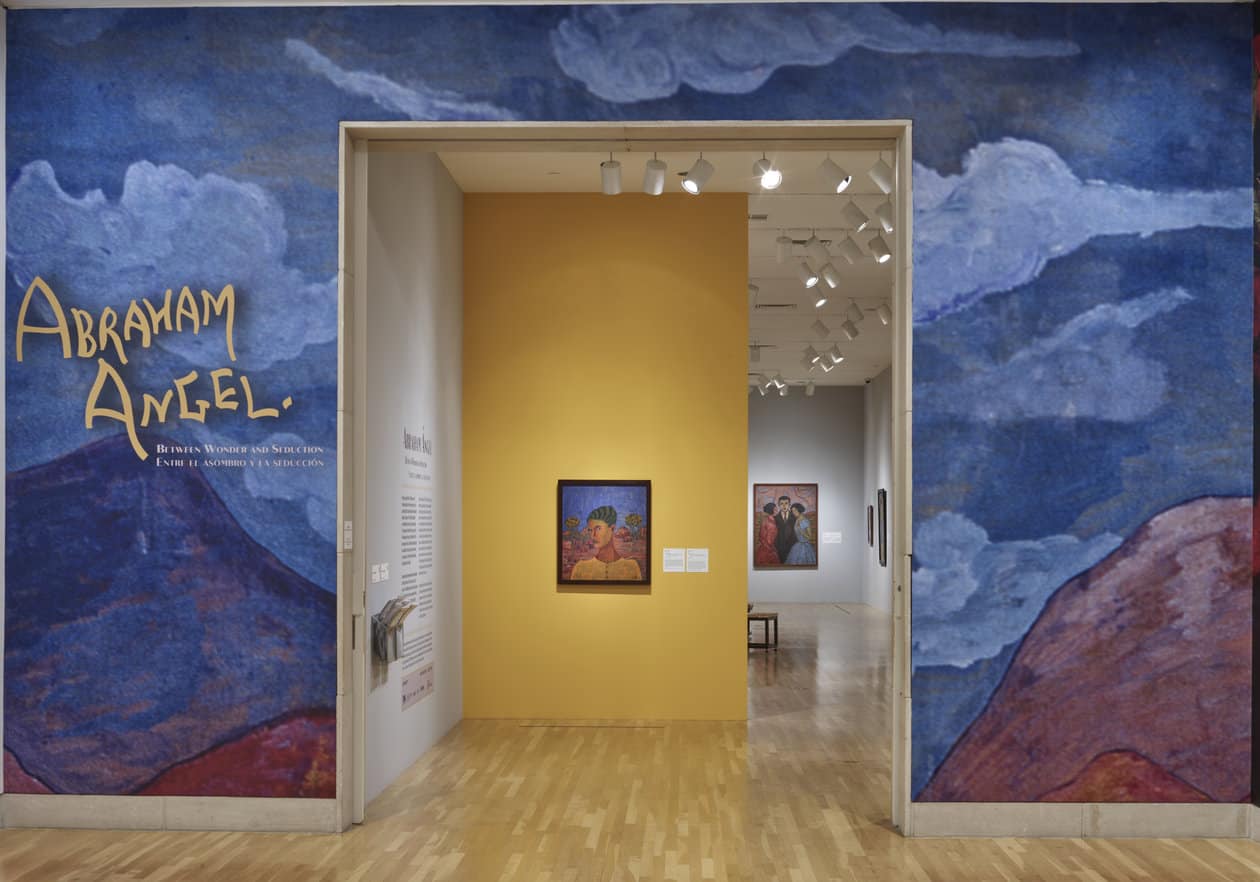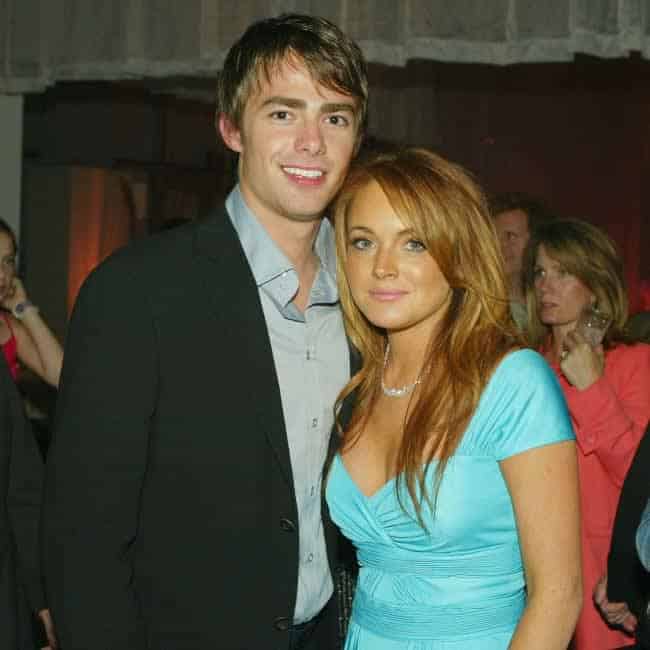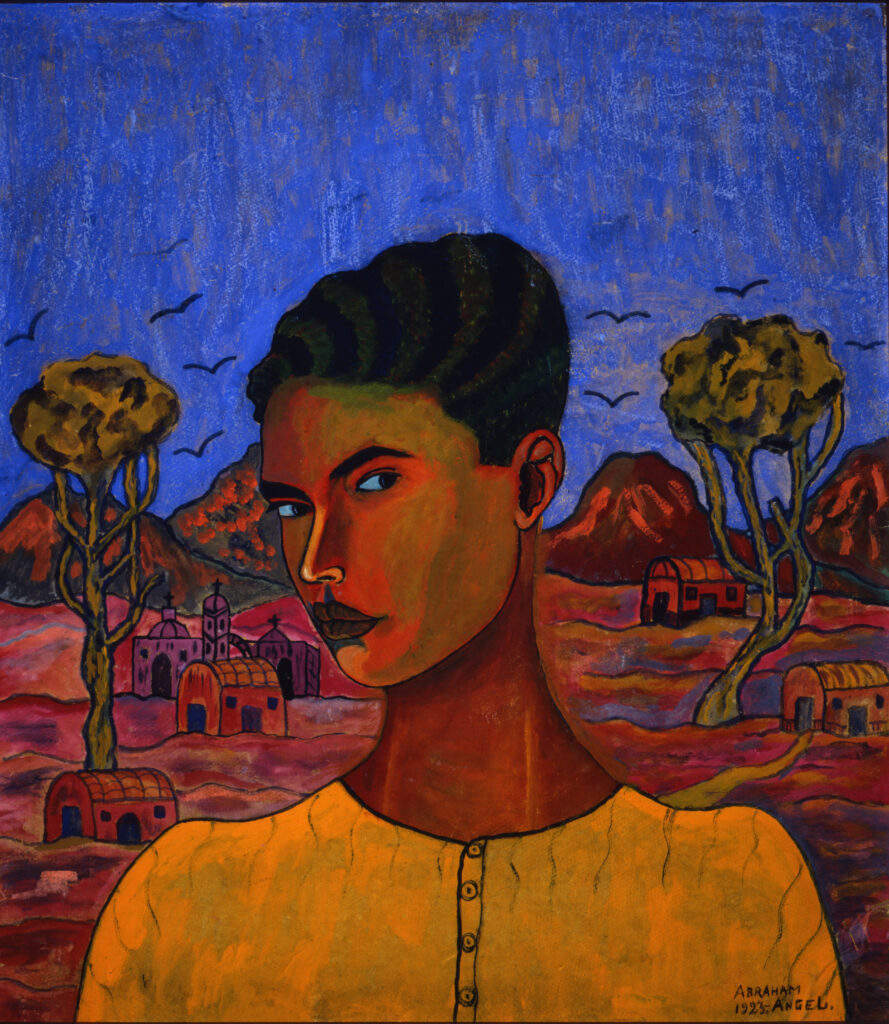
Image: Self Portrait – Autorretrato, Abraham Ángel , Courtesy Dallas Museum of Art (DMA)
The Dallas Museum of Art's outstanding exhibition Abraham Ángel: Between Wonder and Seduction
The Dallas Museum of Art's outstanding exhibition Abraham Ángel: Between Wonder and Seduction, showcases the legacy of the early 20th century artist, who was both a unique voice in Mexican art and a LGBTQ+ pioneer. This is the first time in history that nearly all known surviving works by Ángel have been assembled, and for many an introduction to his work.
Alienated from members of his family at 16 years old for being different, three years later, Abraham Ángel diedwhile still a teenager – at only 19. While his compelling work is sometimes overshadowed by his tragic end, he left 24 known paintings behind, now considered priceless, and a treasured chapter in the history and development of Mexican art.
Sponsor
This post is in partnership with and sponsored by Dallas Museum of Art. We appreciate their support and partnership.
Abraham Ángel Card Valdes was born in 1905, in El Oro de Hidalgo, a small mining town at the height of foreign investment in gold mining in Mexico. The youngest of 5 siblings, his father was a Scottish prospector and womanizer, who soon abandoned his family, and left the oldest son, Adolfo, in charge. Together with his family, Ángel moved to Mexico City when he was 11. Developing his artistic talents in his early teens, a rift with his brother reached its peak when he enrolled in the national school of fine arts (Escuela Nacional de Bellas Artes). Although shadowed by his mother's grief, rather than comply to his brother's wishes to enter the mining trade, Ángel followed his dreams, left home and dropped their last name forever. He later moved into his tutor, and lover, Manuel Rodríguez Lozano's home, and they lived together until his death..
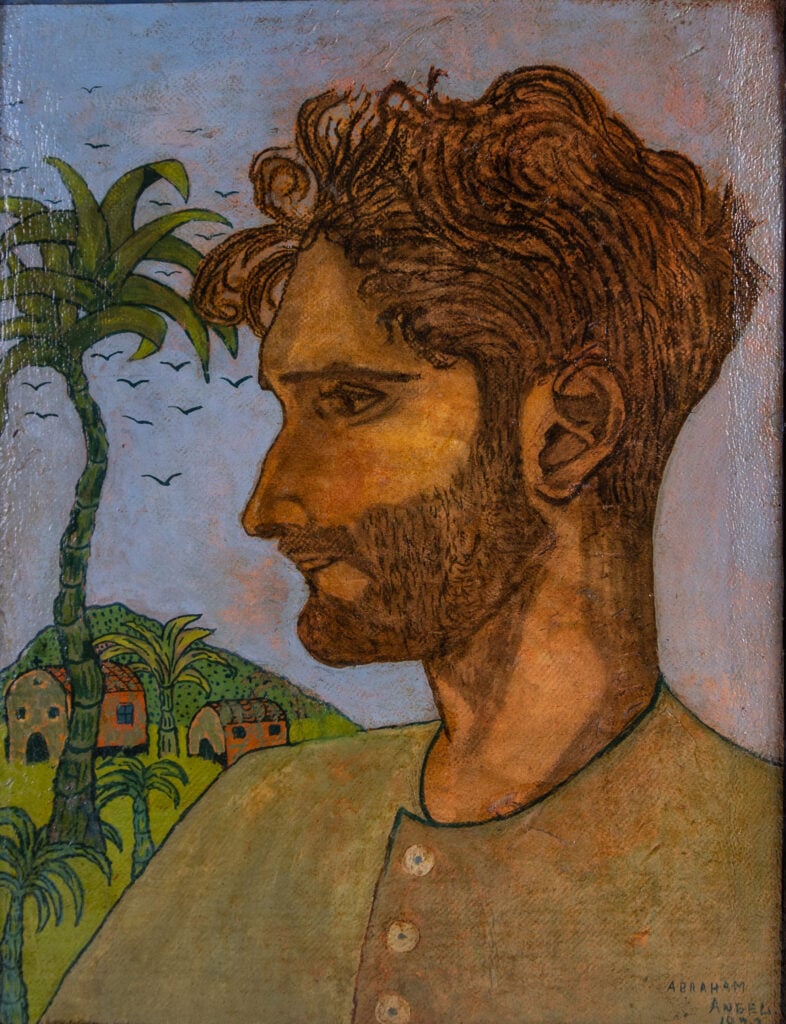
Image: Manuel Rodríguez Lozano – Retrato de Manuel Rodríguez Lozano, 1922. Abraham Ángel, Courtesy Dallas Museum of Art (DMA)
During three intense years together, Ángel traveled the world with his lover
During three intense years together, Ángel traveled the world with his lover, and Lozano's wife divorced him. They were somewhat sheltered from public scrutiny, unlike many same-sex couples and artists of the period, by a 14-year age difference and Lozano's previous marriage, and by embedding themselves into an accepting community of fellow creatives emerging in urban spaces. Their relationship ended in 1924. The cause of their relationship's demise is unknown. Some art historians link its end with Lozano taking in another young artist as his muse and lover. Soon after, Abraham Ángel was found dead in Manuel Rodriguez Lozano's workshop. Officially reported as heart failure, many art historians suspect that he committed suicide with a lethal dose of cocaine.
Ångel developed a unique artistic footprint that varied greatly from the prevailing style of well-known painter Diego Rivera, and reflected the colors and changing culture of early 20th-century Mexico. Some of his most famous paintings are a celebration of male beauty, including one of his last paintings “Portrait of Hugo Tilghman the Tennis Player,” which can be seen in the current exhibit.
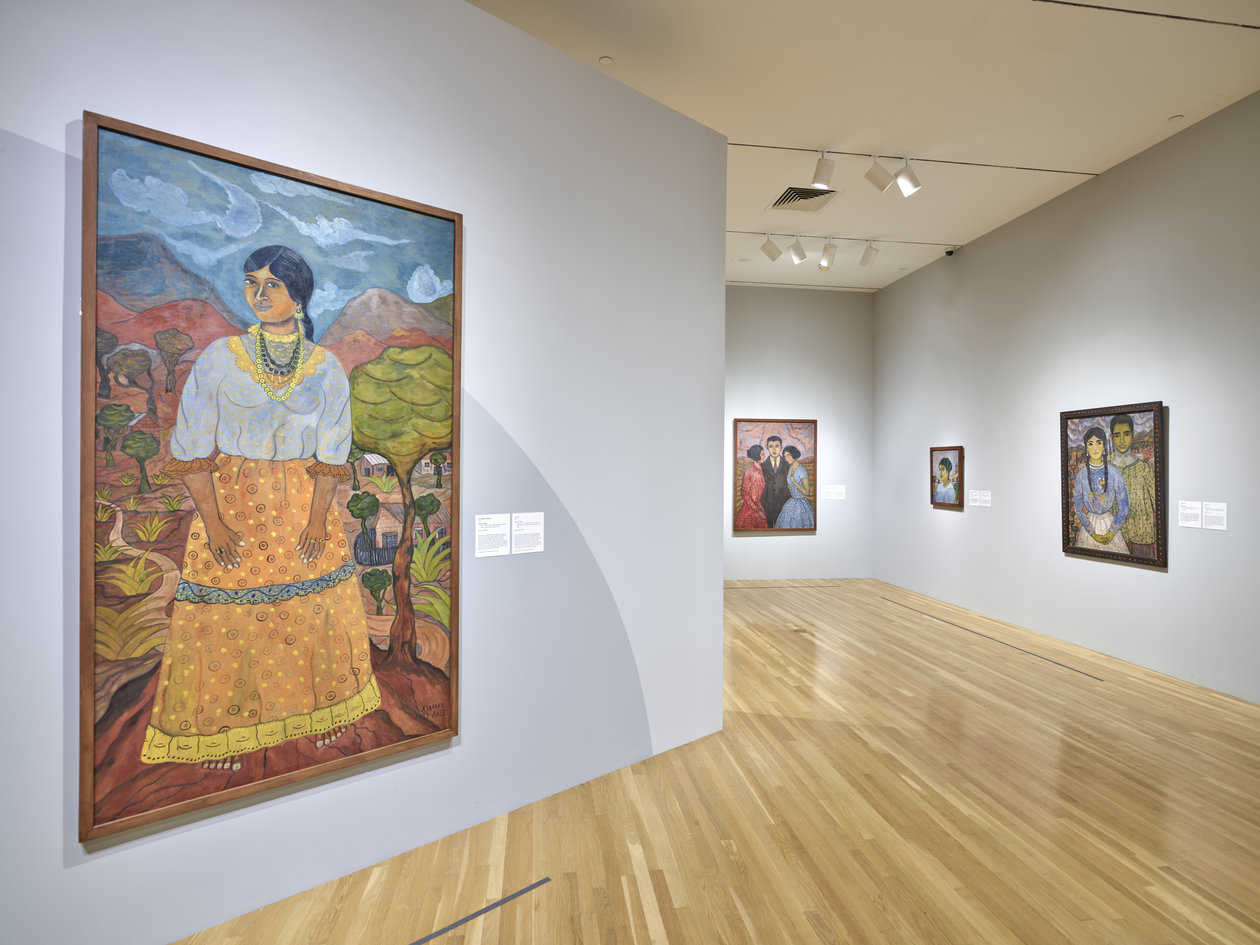
Abraham Ángel's legacy in the history of Mexican art is not as internationally well-known as many other artists, however two of his paintings were featured alongside then-contemporary artists Diego Rivera, Frida Kahlo and Rufino Tamayo in the Museum of Modern Art's seminal 1940 exhibition “Twenty Centuries of Mexican Art.” The current retrospective at the Dallas Museum of Art is the most high-profile celebration of his work in over 35 years.
Despite the shortness of his career, Ángel's legacy is one of bold and joyful expression in the face of a world not ready for him. Tapping into the emerging queer subculture of Mexico in the 1920's, Ángel's work asserted his own identity and in doing so carved out space for future queer artists in Mexico and beyond.
Between Wonder and Seduction at the Dallas Museum Of Art runs through January 28, 2024. For tickets and more information, visit: https://dma.org/art/exhibitions/abraham-angel-between-wonder-and-seduction About the Dallas Museum of Art
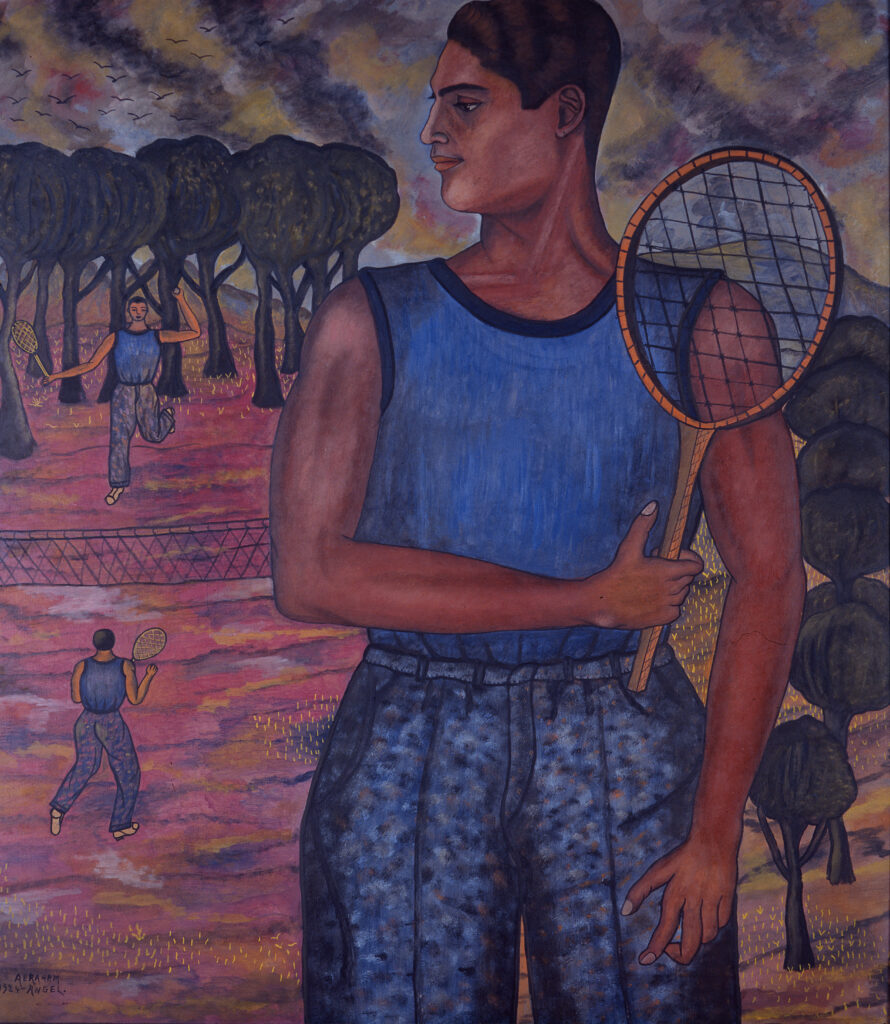
Image: Portrait of Hugo Tilghman – Retrato de Hugo Tilghman, 1924. Abraham Ángel, Courtesy Dallas Museum of Art (DMA)
Established in 1903, the Dallas Museum of Art (DMA) is among the 10 largest art museums in the country. With a free general admission policy and community outreach efforts, the DMA is distinguished by its commitment to research, innovation, and public engagement. At the heart of the Museum and its programs is its global collection, which encompasses 25,000 works and spans 5,000 years of history, representing a full range of world cultures. Located in the nation's largest arts district, the Museum acts as a catalyst for community creativity, engaging people of all ages and backgrounds with a diverse spectrum of programming, from exhibitions and lectures to concerts, literary events, and dramatic and dance presentations. The DMA is an Open Access institution, allowing all works believed to be in the public domain to be freely available for downloading, sharing, repurposing, and remixing without restriction. For more information, visit dma.org.
